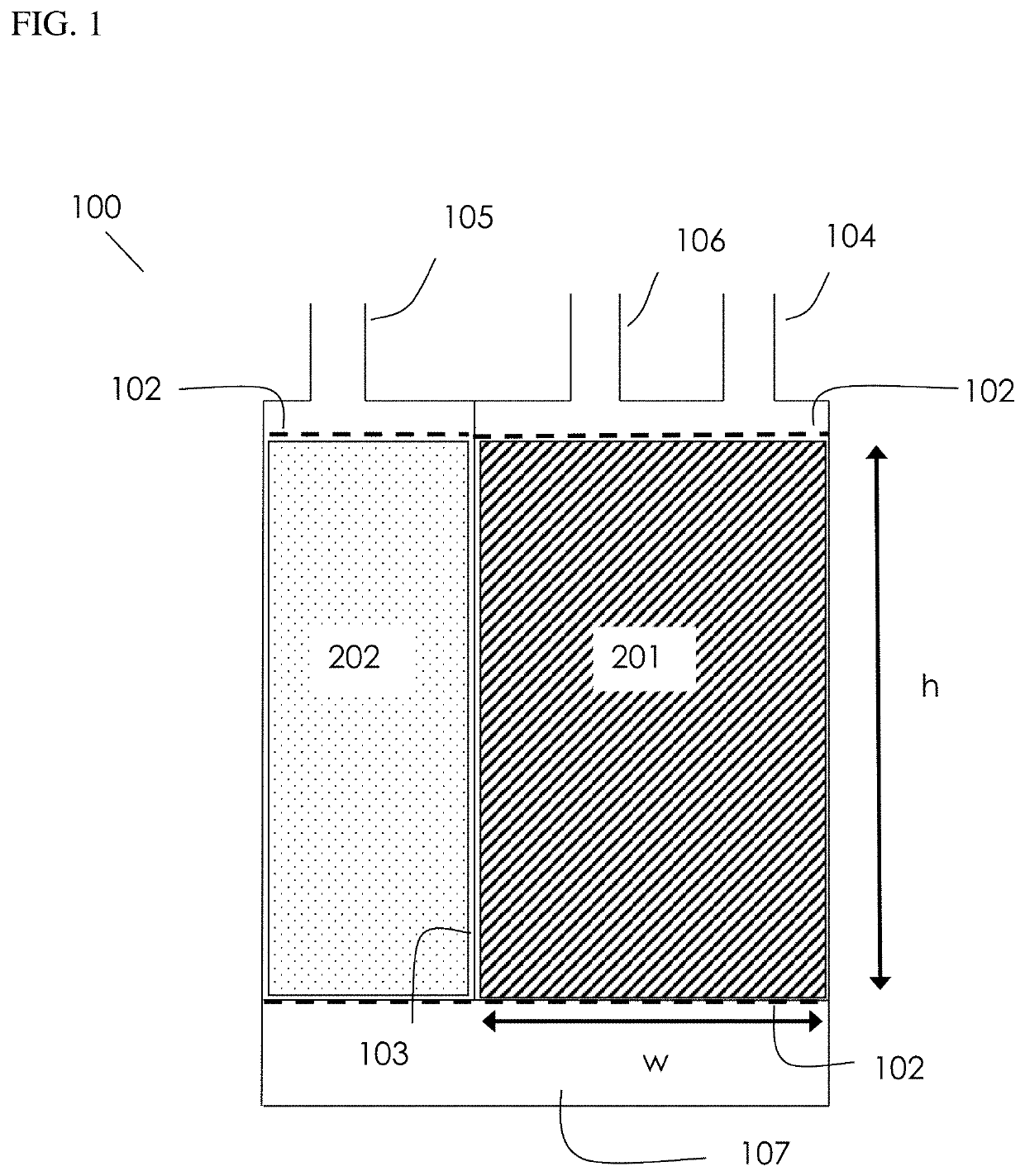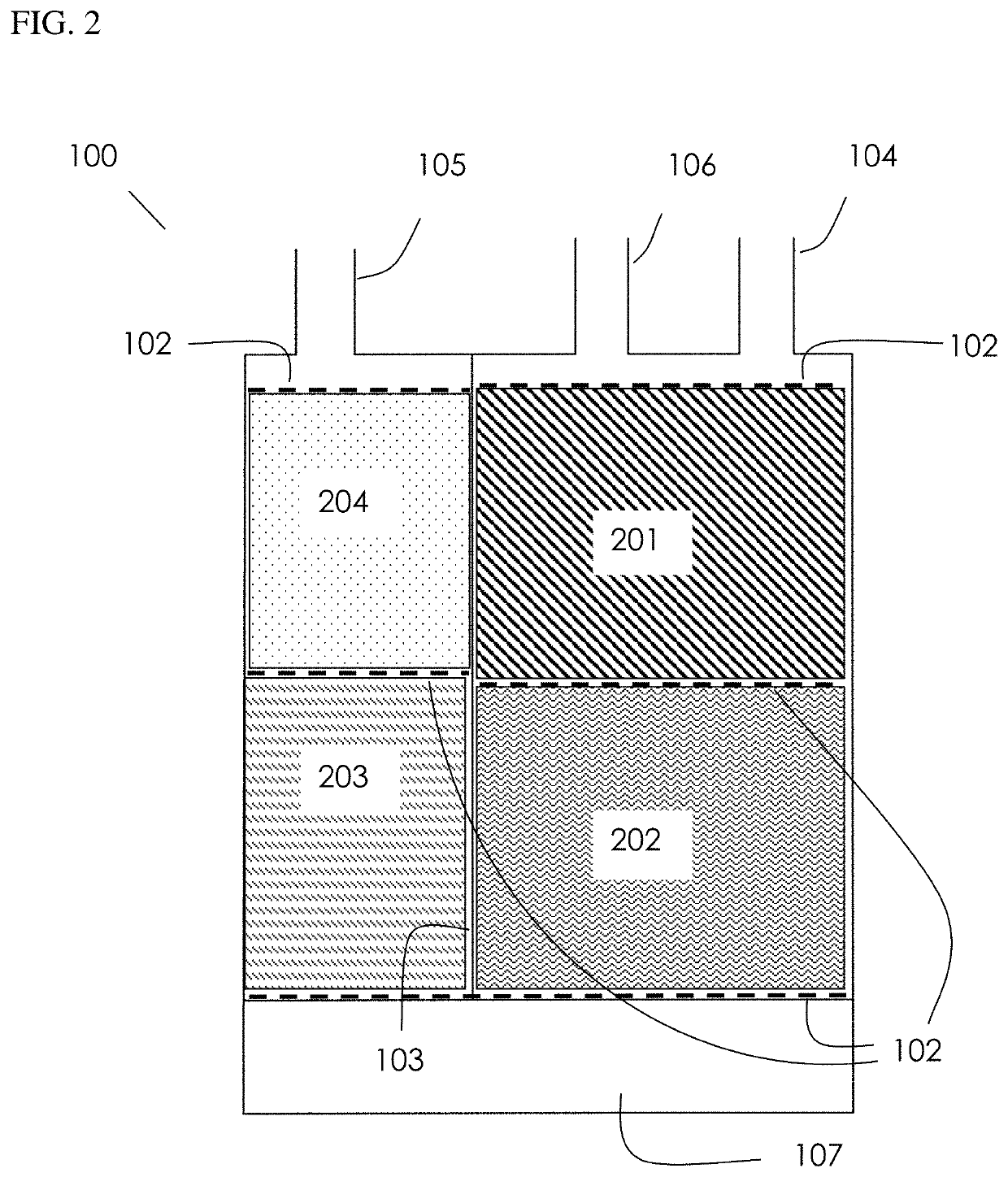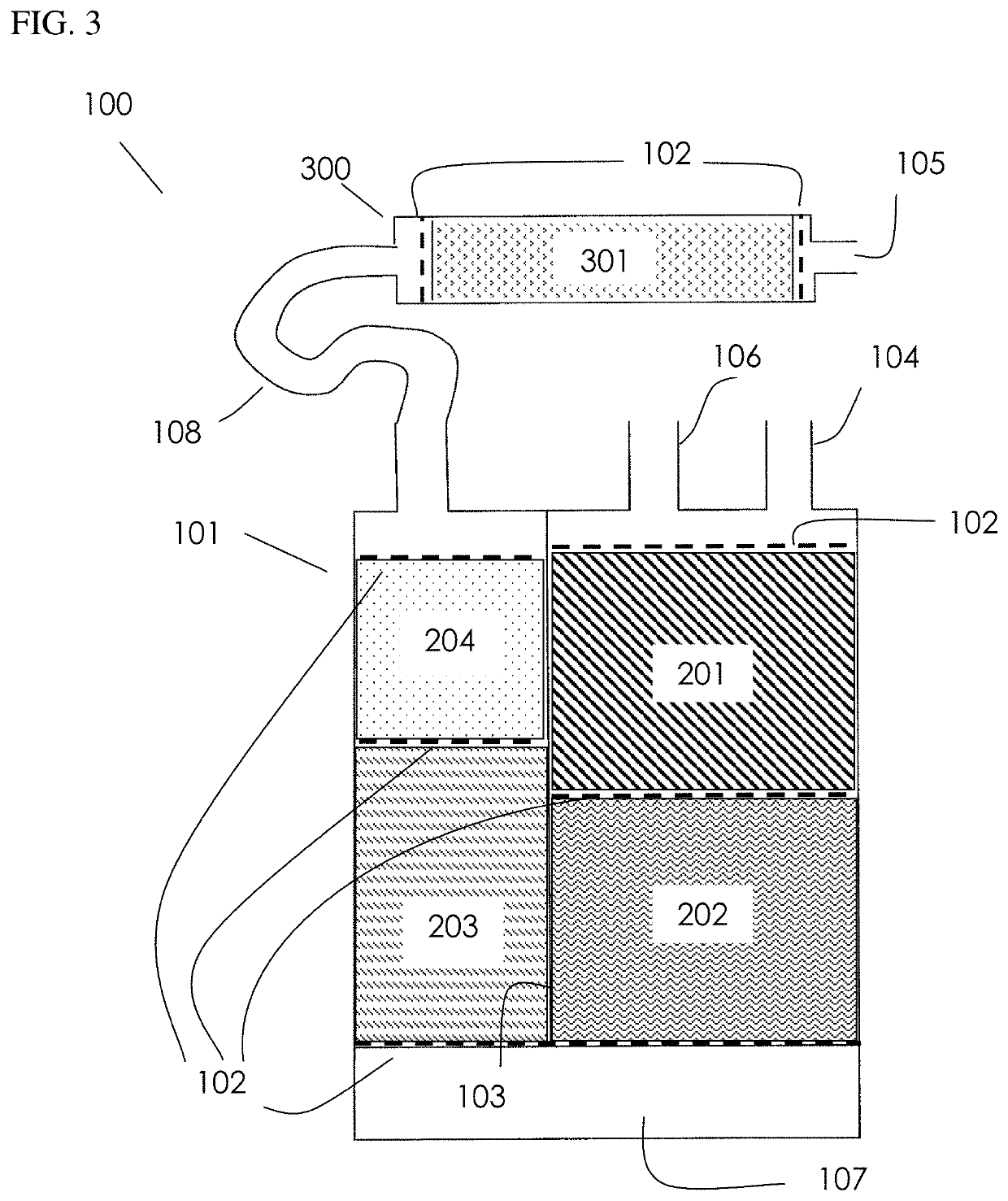Low emission adsorbent and canister system
a canister system and low emission technology, applied in combustion-air/fuel-air treatment, other chemical processes, separation processes, etc., can solve the problems of dbl emissions continuing to create challenges for evaporative emission control systems, hybrid vehicles producing nearly the same amount of evaporative fuel vapor, and hydrocarbon air pollution, etc., to achieve low dbl bleed emission performance properties, simple and more compact, and low emissions. surprisingly and unexpected
- Summary
- Abstract
- Description
- Claims
- Application Information
AI Technical Summary
Benefits of technology
Problems solved by technology
Method used
Image
Examples
examples
[0178]Determination of Apparent Density, BWC, and Powder Butane Activity
[0179]ASTM D2854 (may be used to determine the apparent density of particulate adsorbents, such as granular and pelletized adsorbents of the size and shape typically used for evaporative emission control for fuel systems.
[0180]ASTM D5228 may be used to determine the butane working capacity (BWC) of the adsorbent volumes containing particulate granular and / or pelletized adsorbents. The butane retentivity is calculated as the difference, in units of g / dL, between the volumetric butane activity (i.e., the g / cc apparent density multiplied by the g / 100 g butane activity) and the g / dL BWC.
[0181]For powdered activated carbon ingredients for extrusion, a powder butane activity (“pBACT”) may be measured by any method known to those of skill in the art recognized as equivalent for ascertaining that value, i.e., the equilibrated gram weight capacity of the oven dried powder sample when exposed to 1.00 atm partial pressure ...
PUM
| Property | Measurement | Unit |
|---|---|---|
| hydraulic diameter cell pitch | aaaaa | aaaaa |
| hydraulic diameter cell pitch | aaaaa | aaaaa |
| hydraulic diameter | aaaaa | aaaaa |
Abstract
Description
Claims
Application Information
 Login to View More
Login to View More - R&D
- Intellectual Property
- Life Sciences
- Materials
- Tech Scout
- Unparalleled Data Quality
- Higher Quality Content
- 60% Fewer Hallucinations
Browse by: Latest US Patents, China's latest patents, Technical Efficacy Thesaurus, Application Domain, Technology Topic, Popular Technical Reports.
© 2025 PatSnap. All rights reserved.Legal|Privacy policy|Modern Slavery Act Transparency Statement|Sitemap|About US| Contact US: help@patsnap.com



